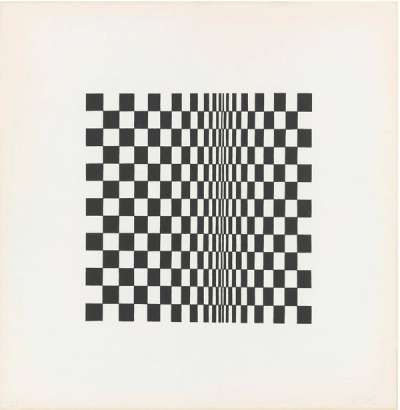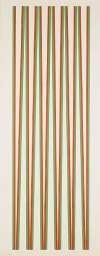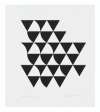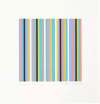Movement
Dizzying and kaleidoscopic, Bridget Riley's Movement series (1962) represents two defining works in the Op Artist's oeuvre. At the time of their creation, Riley's two prints were regarded as ’breakthroughs’ into abstraction with geometric shapes. Though these screen prints are two-dimensional and executed in monochrome, they disorientate the viewer with an almost nauseating sense of motion.
Bridget Riley Movement For sale
Movement Value (5 Years)
Works from the Movement series by Bridget Riley have a strong market value presence, with 16 auction appearances. Top performing works have achieved standout auction results, with peak hammer prices of £50396. Over the past 12 months, average values across the series have ranged from £32000 to £50396. The series shows an average annual growth rate of 10.1%.
Movement Market value
Auction Results
| Artwork | Auction Date | Auction House | Return to Seller | Hammer Price | Buyer Paid |
|---|---|---|---|---|---|
 Untitled (Based On Movement In Squares) Bridget Riley Signed Print | 25 Sept 2025 | Christie's London | £38,250 | £45,000 | £60,000 |
 Untitled (Based On Blaze) Bridget Riley Signed Print | 27 Mar 2024 | Christie's London | £25,500 | £30,000 | £40,000 |
Sell Your Art
with Us
with Us
Join Our Network of Collectors. Buy, Sell and Track Demand
Meaning & Analysis
The two prints constituting Riley’s Movement series, were considered breakthroughs into abstraction with geometric shapes when first created.
Executed in 1962, both Untitled (Based On Blaze) and Untitled (Base On Movement In Squares), the two prints constituting this series, were considered breakthroughs into abstraction with geometric shapes. Integrating optical, scientific effects into the language of painting, these works merge mathematical precision with artistic freedom and expression. Through repeating simple geometric shapes, Riley creates the effect of movement on the two-dimensional surface, dazzling the viewer with an arresting spectacle. This series stimulates the viewer’s eyes into sharper attention, both to art and to reality.
Untitled (Based On Blaze) is formed by a succession of concentric circles made of zig zags. Where the ‘zigs’ of one circle meet the ‘zags’ of the next, chevrons are formed, which appear to rotate, creating the perception of movement. Untitled (Based On Movement In Squares) is an anxiety-inducing illusion, constructed by alternating black and white squares that decrease in width as they reach the centre of the composition, appearing to bend inwards: two folding planes that vanish upon contact. Marking the first time in which Riley adopted the use of black and white repeated forms across the picture plane, this print is most prominent in Riley’s oeuvre and is the one Riley credits with beginning her explorations into geometric forms and spatial dynamics. Creating a restless impression of movement, these works refuse to let the eye settle.
Both demonstrate Riley’s interest in capturing the brilliance of nature. Untitled (Based On Blaze) captures the sensations of dazzling sunlight. Writing about a prominent childhood memory, the artist recalled: “looking directly into the sun over a foreshore of rocks exposed by the tide - all reduced to a violent black and white contrast”. Throughout her career, Riley has sought to capture the sensations and emotions provoked by the natural world in non-representative abstraction.
Questioning our ocular perception of the world around us, Riley’s works are a celebration of seeing. This series serves as the beginning of that enquiry, offering an insight into Riley’s earliest investigations into the conceptual role of geometric shapes: beginning printmaking in 1962, these screenprints were some of Riley’s first. Starting exclusively in monochrome, Riley later expanded to using grey tones in the mid 1960s. It was these black and white works which initially propelled Riley to international acclaim following the artist’s inaugural solo show at Gallery One in 1962.









